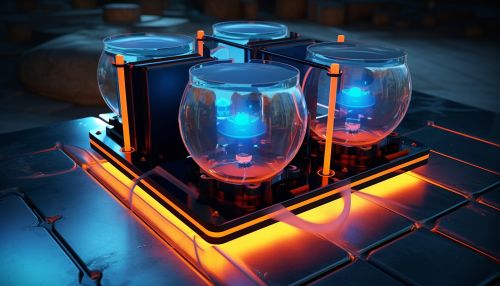Microbial Fuel Cells
Introduction
Microbial fuel cells (MFCs) are bio-electrochemical systems that harness the power of respiring microbes to convert organic substrates directly into electrical energy. At its core, the MFC is a fuel cell, which transforms chemical energy into electricity using oxidation reduction reactions. This technology, while not widely used at present, has the potential for significant cost and environmental benefits over traditional heat engine power systems.
History
The concept of a microbial fuel cell dates back to the early 20th century, when M. C. Potter first discovered that microorganisms could generate electricity. In the 1970s, Robin Derek Lovley further developed the concept by discovering a group of bacteria, Geobacter, that could produce electricity by oxidizing organic compounds.
Construction
The basic components of a microbial fuel cell are an anode, a cathode, a proton exchange membrane (PEM), and an electrical circuit. The anode is generally made of a material that is a good conductor of electricity and is resistant to corrosion, such as carbon or platinum. The cathode is typically made of a similar material, but is often coated with a catalyst (such as platinum) to aid in the reduction of oxygen.
Microbial Fuel Cell Types
There are several types of microbial fuel cells, based on the different arrangements of the anode, cathode, and PEM. These include the single chamber MFC, the dual chamber MFC, and the stackable MFC.
Microbial Fuel Cell Applications
Microbial fuel cells have a wide range of potential applications, including wastewater treatment, biosensor development, and energy production for remote sensors.
Challenges and Future Directions
Despite the potential benefits of microbial fuel cells, there are several challenges that need to be overcome before they can be used on a large scale. These include improving the efficiency of the cells, finding cost-effective materials, and understanding the complex microbial communities involved in electricity production.
See Also


